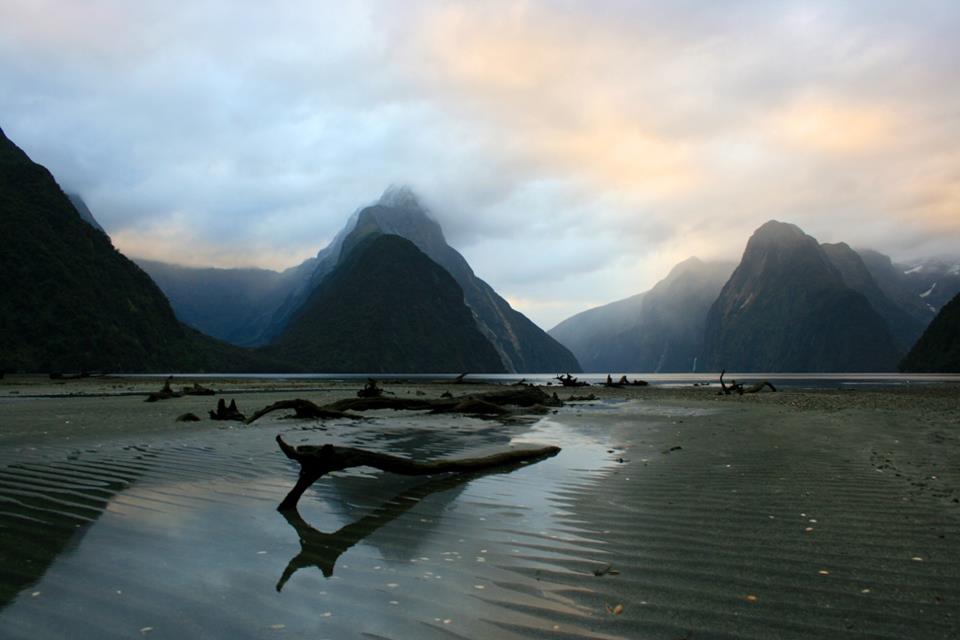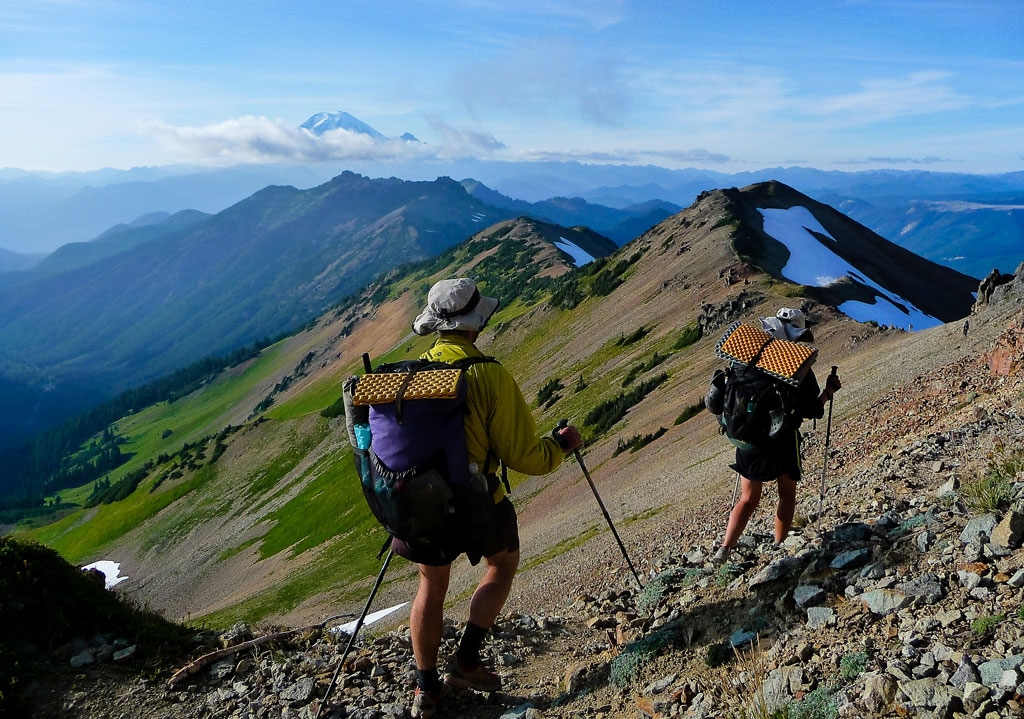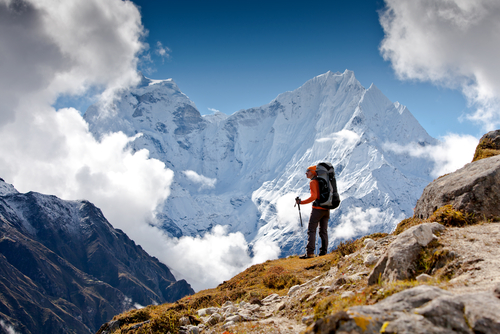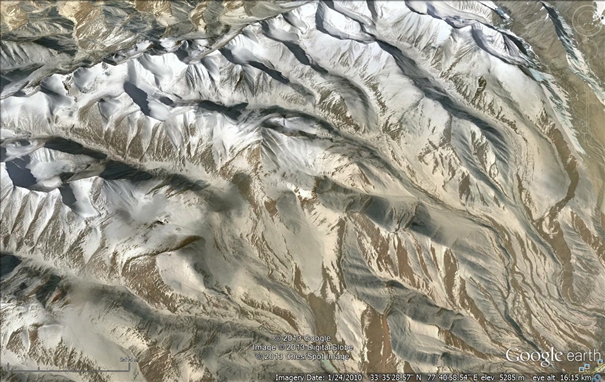Thinking of travelling the world on an ‘outdoors’ gap year? Here are five ways to do it.
Early January, 2010. A suburb of Sydney. I emerge from the dark interior of a multiplex cinema blinking in the harshly ultraviolet light of an Australian afternoon, having just experienced 178 minutes of James Cameron’s ‘Avatar’.
Wow, I think. That was some ride. Islands in the clouds, big blue people, glow-in-the-dark plants, psychic vegetation – they really went to town on all that outlandish nature stuff. But I was oddly unmoved.
I was midway through a ‘gap year’ of sorts, travelling to various places around the world with a particular emphasis on experiencing nature, through trekking, walking, WOOFing, backpacking, and the like. And already, I had seen things that put Avatar’s trippy floating islands and telepathic trees in the shade. The real wonder of the planet and its living residents is beyond the imagination of any filmmaker. In its richness, complexity and capacity to astonish, Planet Earth makes Planet Pandora look pedestrian.
Lots of people set out to ‘see the world’ these days – going backpacking in India or South East Asia has become an established rite of passage for many young people. But whatever your age, taking a year or so out so travel and experience the world is almost always a hugely rewarding experience. And while there are plenty of human wonders, the variety in the natural world is what can make travelling truly extraordinary for fans of nature. Why not see the world, and walk it too?
Fortunately, we live in an age where it has never been easier or cheaper to pull off if you know how. Of course, there are those tried and tested gap year antics we’ve all heard about – climbing Kilimanjaro, skydiving in Australia, and so on. There’s nothing wrong with these, but here we’ve tried to give you some ideas that might take you off the beaten track a bit.
Here goes…
-
Work your way into the wilds

New Zealand: Makes Avatar look rubbish
A ‘Working Holiday’? Isn’t that an oxymoron?
Stick with us – a Working Holiday Visa (WHV) can be considerably more exciting than it sounds. Although they sometimes go by different names depending on the country, the principle is the same: the visa allows you to stay in that country for a period longer than a normal holiday visa (typically a year, sometimes two) and gives you the right to work. They are offered to UK citizens by a number of countries, largely Commonwealth ones. That means the Australian outback, Canada’s vast wildernesses or New Zealand’s ‘Great Walks’ can all be experienced with the help of these visas.
Travellers often use them to do temporary, seasonal work – fruit picking, hospitality etc – for a few months at a time, building up cash. The rest of the time, they travel. A WHV effectively means you can spend up to a year or more in a given country, adventuring in the gaps between working, and ‘break even’ financially by the end of it. The work itself isn’t always a chore, either – more often than not you will find yourself staying with and working alongside fellow travellers doing the same thing as you from all over the world. Close and lasting friendships can emerge.
New Zealand Working Holiday Visa
Canada Working Holiday Visa
Australia – Contact the British High Commission, Canberra
-
Hit the trail in the USA
 The Pacific Crest Trail: 2,600 wild miles from Mexico to Canada
The Pacific Crest Trail: 2,600 wild miles from Mexico to Canada
The USA is famous for its continent-crossing highways and long, open roads. Less well known are its long-distance walking trails, some of which make Route 66 look paltry by comparison.
Like most things, the Americans like their walking done big. See, for instance, the famous ‘Triple Crown’: the Appalachian Trail, a 2,200 mile route from Maine to Georgia; the Pacific Crest Trail, a 2,663 odyssey following the highest portion of the Sierra Nevada and Cascade Range; and the Continental Divide Trail, a 3,100 mile epic along the mountain spine of North America.
The distances may sound enormous, but you don’t have to be a superhuman adventurer type to attempt them. Many of them have an established trail infrastructure, making them within the abilities of most reasonably fit and determined people. And you don’t have to have American-sized pockets to attempt them, either; estimates for the cost of an Appalachian Trail ‘thru-hike’ (walking it from end to end) come out around the $3000 mark, or £1800. You’ve got to add gear and flights on top of that, but it’s still not bad for a six month-long adventure that will provide memories for a lifetime.
Appalachian Trail Conservancy: http://www.appalachiantrail.org/
Pacific Crest Trail Association: http://www.pcta.org/
Continental Divide Trail Coalition: http://www.continentaldividetrail.org/
-
Cross a continent – by human power
The cost of flights is usually by far the single biggest expense in any overseas adventure. So why not avoid it by getting to your destination under your own steam? Adventurers have travelled incredible distances without setting foot in motorised transport. The video above, for example, shows Christoph Rehage setting off on November 9, 2007, walking 4,500km across China to the Gobi Desert, and growing a rather fetching beard on the way. Eleanor Moseman has cycled approximately 15,000 miles around Asia. And in the course of a 13 year journey, Justin Lewis paddled across oceans and fought with crocodiles on the way to completing the first human-powered circumnavigation of the world. Others have undertaken such journeys closer to home; after leaving university and struggling to find a job, Nat Severs walked the entire 7,000 mile length of the British coastline. As you do.
Of course, these Herculean journeys won't be for everyone. But in this day and age, when we’re used to being whisked off in a car, plane or train to get to distant destinations, experiencing what it’s like to go without them, even for a relatively short distance, can be an exotic discovery in itself.
-
Walk the length of a country
 Walking in Nepal: ridiculously epic
Walking in Nepal: ridiculously epic
While we’re on the topic of long walks, why not consider walking from one end of a country to another? Ideally one famous for its massive mountains of one sort or another?
Well, this seems to be an idea that has caught on recently, with the last few years seeing Scotland, New Zealand and Nepal all linking their tips and toes with newly-developed walking trails. Scotland End to End stretches from Kirk Yetholm on the Scottish Borders to Cape Wrath at its north western tip, while New Zealand’s Te Araroa Trail goes from its sub-tropical northern cape to its sub-Antarctic south, passing the country’s incredible diversity of natural landscapes on the way.
The undisputed daddy of this bunch, however, has to be the Great Himalaya Trail (actually two trails, a high route and a low route), which does nothing less than span the entire length of Nepal. That’s Nepal, by the way. Try and picture, for a minute, what it must be like to walk for 1,700 kilometres along the roof of the world. Just reading the names of the places and mountains it passes by is exhausting and dizzying enough. Kanchenjunga, Annapurna, Manaslu, Ganesh, Everest… excuse me, I think I need a sit down.
-
Climb an unclimbed mountain
 Not exactly busy: the remote region of Ladakh, India, containing Cha Ri
Not exactly busy: the remote region of Ladakh, India, containing Cha Ri
It’s tempting to think that human beings have made their way into every crevice and corner of the globe, and that there can’t be any unexplored space left at all, let alone any unclimbed mountains. You’d be wrong – there are plenty. You just need to do your research.
Earlier this year, a British team did exactly that, making the first ascent of Cha Ri, a previously unnamed 6,000m peak in Ladakh, India. Why not spend your gap year or sabbatical following their example? (But not their foosteps, obviously. That would defeat the point.)
Try this BMC article, How to climb an unclimbed mountain, for more pointers.
So there you have it. Some of these ideas are bigger and bolder than others, but all are within the possibility of an average person with a bit of ambition and determination. And what’s more, all will thoroughly outdo everyone you speak to during Fresher’s week.
Good luck – and happy travels!
This article is part of BMC Student Season, a term's worth of student-friendly articles and social media banter to help students get the most out of climbing and walking. Please tell us what you think of the BMC by completing our young people survey aimed at 14-25 year olds.
« Back